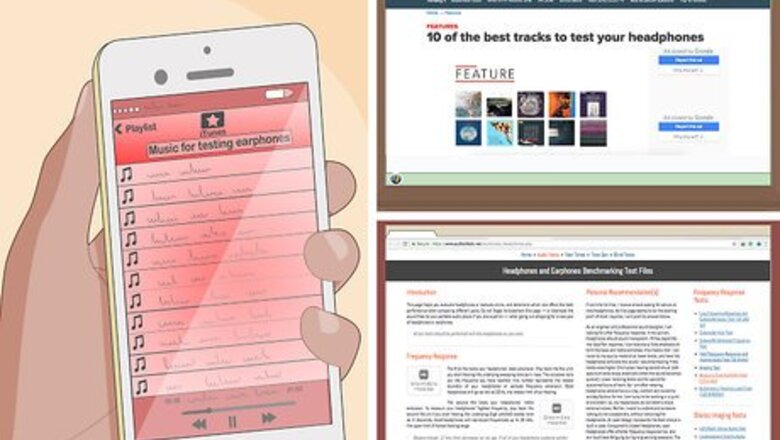
views
Choosing Testing Music
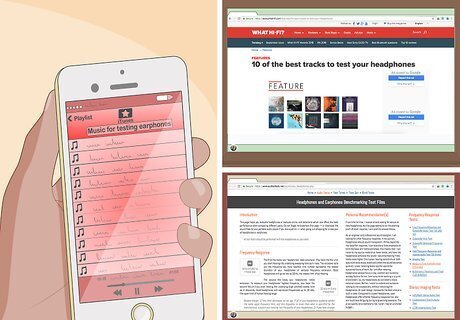
Make a playlist of your favorite music. The ultimate earphone test involves the music you know best. These tracks are typically what you want the earphones to play well. In addition, you know how these tracks should sound, so you can identify any audio flaws caused by inferior earphones. You can create a playlist in a music program such as iTunes. It doesn’t matter what genre you use as long as you know the songs well. Search online to find music recommended for testing, such as at https://www.whathifi.com/features/10-best-tracks-to-test-your-headphones. You can also download non-music audio files to give your earphones more accurate tests, such as at https://www.audiocheck.net/soundtests_headphones.php.

Test earphones with multiple genres of music if possible. Using multiple genres helps test the full range of sound earphones can produce. Different genres of music may focus more on higher or lower pitches. Orchestral music is often used for a wide range of pitches. Rock music can be good for higher pitches, while jazz music is often helpful for testing lower pitches. For higher pitches, look for loud vocals, guitars, and drums. For lower pitches, seek out low, steady bass lines. If you don’t listen to a wide variety of music, that’s okay. It’s more important for you to know the songs well so you can decide if the earphones give you the sound profile you desire.
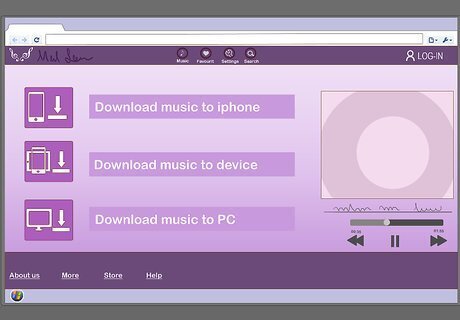
Download music playlists onto an electronic device. Downloading the playlist onto your device allows you to test the earphones as soon as possible. You may be able to bring a phone or an MP3 player into the store with you so you can test earphones before you buy them. Plug the earphones into your device and play your music. Keep any online audio tests bookmarked on your phone or computer so you can access them without downloading any files. Many times you can’t test earphones before buying them. When this happens, make sure the store has a good return policy in case you are dissatisfied with the sound quality.
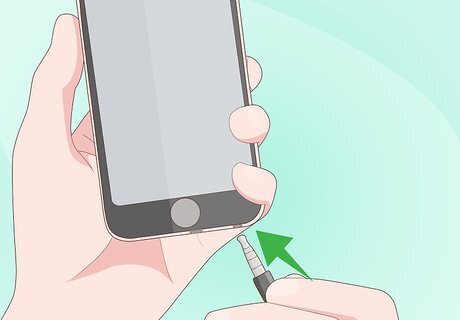
Listen to the music through the earphones. Plug the earphones into your device and go through the tests 1 by 1. Be sure to check the overall audio quality as well as its range. Make sure you are able to hear your playlist fully and without obnoxious buzzing. By doing this, you have a better chance of finding earphones that are right for you. The only way you can really test earphones is by using them.
Judging Sound Quality
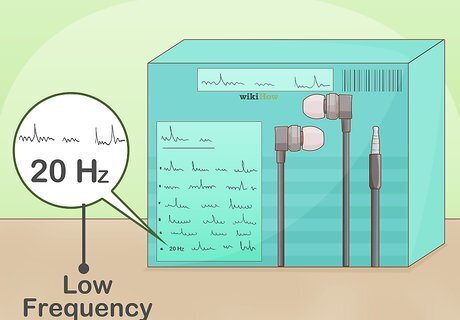
Play low-frequency sounds to make sure they are audible. To test the frequency range of your earphones, you can play a song with a variety of pitches. Listen carefully for the low sounds, such as those from bass guitars or baritone vocals. These tones should sound deep but crisp and rich. Some earphones can detect frequencies as low as 20 hertz (Hz). Check the packaging for more information. If all headphones seem to have the same frequency issues, your hearing could be the issue.
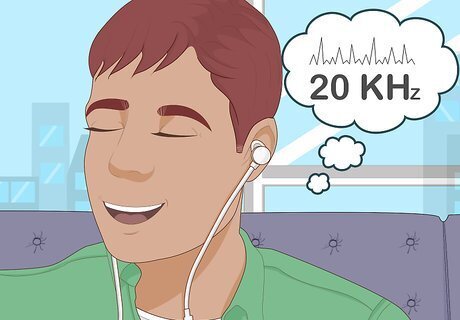
Listen to high frequencies to gauge how well the earphones detect them. Balanced earphones pick up high frequencies as well as low frequencies. High frequencies occur in orchestral arrangements and other music. Try listening to music with high-pitched voices, guitars, piccolos, and other instruments to make sure these tones come through the earphones without distortion. Good earphones can detect frequencies as high as 20 kHz. Earphones may detect either high or low frequencies better. If this happens, choose earphones that are best for the content you listen to.
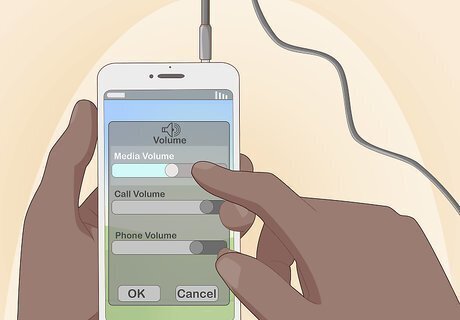
Adjust the sound volume to hear the dynamic range. To test the dynamic range, change the volume so the audio plays loudly but doesn't make you uncomfortable. The dynamic range indicates how loud and soft the audio can get before you stop hearing it. You should be able to hear the full range of sound clearly at a comfortable volume. For instance, if you listen to a lot of podcasts, you may need your earphones to pick up low voices rather than high-pitched instruments.
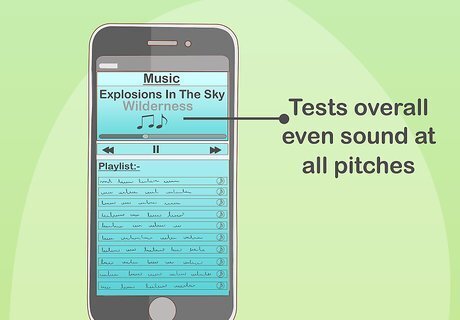
Test the earphones for an even sound quality at all pitches.. Flatness is when low, medium, and high-pitched sounds all have the same audio quality. Try playing a song that transitions between various pitch levels. If the earphones seem to pick up higher tones much better than lower tones, the music probably won’t sound that great to you. Good earphones maintain a consistent audio quality no matter how high or low a tone is. Fatness doesn’t mean the music lacks dynamic highs and lows. This test is subjective. It can change depending on your hearing. Find earphones that work best for you personally.

Check the audio for any signs of buzzing or rattling. Keep the audio at a high but comfortable level and listen closely. You have probably heard unpleasant sounds blasting from a car radio before. Bass-heavy music often sounds unpleasant because the electronics cannot relay the sounds cleanly. No one enjoys having that buzzing sound in their ears. The audio should sound clear no matter what plays. Usually, newer, costlier earphones have less issues with rattling than older, cheaper earphones. Rattling may not be an issue if you don’t listen to a lot of music with low pitches.
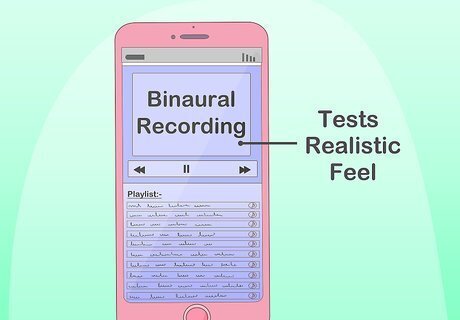
Gauge how realistic the sound is in your ears. The best earphones are immersive, making you feel like you’re at a concert or listening to someone speak in person. For this to happen, the audio needs to be full and rich. Any distortion not only sounds unpleasant, but reminds you you’re wearing earphones. If you can, use binaural recordings to test this. These sounds are recorded with microphones placed on the ear, so they are ideal tests of immersion. For example, listen to binaural audio of someone knocking on a door. Ask yourself if it sounds like someone is knocking on a real wooden door right next to you.
Selecting Earphones that Fit
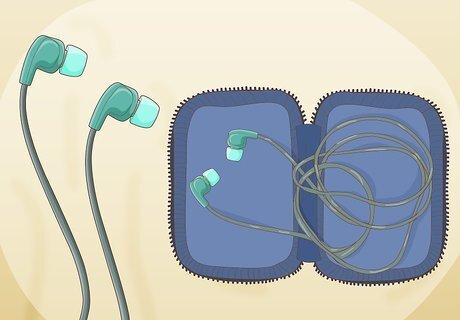
Pick earphones with buds for portability. The most basic type of earphones are earbuds, which are cheap and easy to bring anywhere. These earphones fit directly into your ears. Many of them are relatively comfortable to wear, but may not fit correctly and may fall out of your ears. Earbuds come in different sizes and shapes. Some earphones may not even have rubber ends. In-ear buds fit in your ear canals, so they stay in place better and block out more noise than plain earbuds.
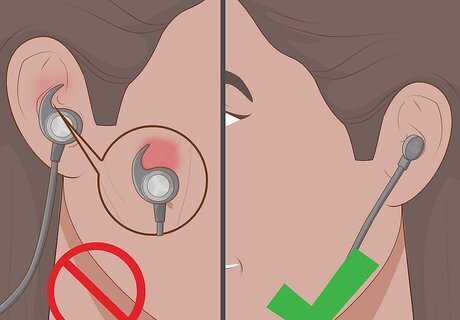
Choose earbuds that are comfortable to wear. If you’re going to wear earbuds, you want them to feel as unobtrusive as possible. Earbuds come in many different varieties, so try on as many kinds as you can before making a selection. Good earbuds feel light in your ears and don’t pinch your skin. For example, some earphones have rubber buds. These may be more comfortable than all-plastic earbuds.
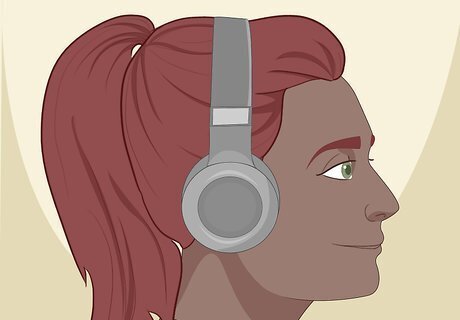
Choose over ear earphones for greater audio quality. This type usually offers better audio quality and noise cancellation when using them instead of bud earphones. However, they are larger, often costlier and may trap heat and moisture that can irritate your ears. Over ear earphones with open backs let in outside noise, so they can be useful outdoors and in some work settings.
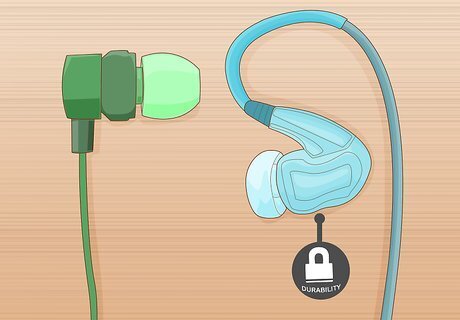
Get durable earphones you can wear for a long time. This depends on how long you plan on wearing the earphones. If you like going for long runs, you are going to need earphones you can wear for hours at a time without them breaking. Durable earphones are often thicker, made from stronger material, and cost a little more than regular earphones. Consider the comfort factor as well. Earphones that feel comfortable at first may start to hurt after hours of usage.
Choosing Features
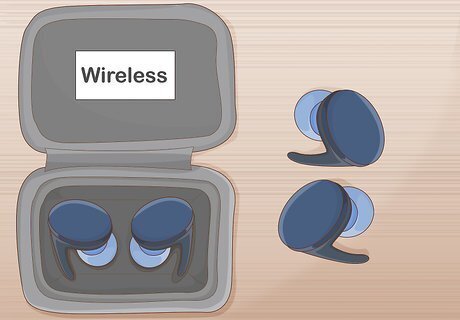
Pick wireless earphones for greater portability. Many, but not all, wireless earphones use Bluetooth technology to connect to your electronic device. The audio is transmitted through the air over a short distance, so you don’t have to worry about any cords tangling or getting in your way. Wireless earphones also come in a variety of styles, so you can usually find a pair you like. Not all devices are compatible with Bluetooth or other wireless technology, so check this before selecting your earphones. Wireless earphones operate on batteries, so consider if maintaining a battery is something you are willing to do.
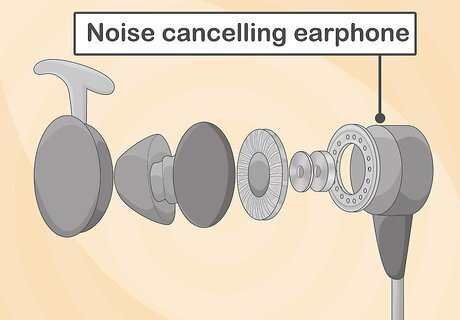
Get noise-cancelling earphones if you want to listen in silence. Think about what your listening environment will be like when using the earphones. If you want total immersion, earphones that block outside noise are ideal. This is great if you’re at home listening over the din of siblings or roommates, but not right when you need to hear another person speak. For example, if you’re at work or walking on a busy street, you may need to hear the sounds around you. Some earphones have an active noise cancelling feature, although this often requires a battery to operate.
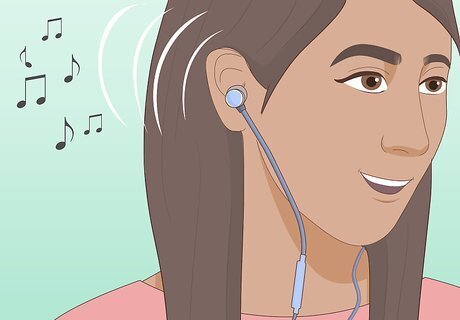
Test how much sound leaks out of the earphones when you take them off. Any noise that “leaks” out of the earbuds is noise that people around you can hear. This can be a very annoying problem depending on your environment. Set the earphones aside and listen to see if you can detect sound even while you’re not wearing them. You will want to minimize sound leakage if you’re going to be near other people and in quiet environments. You can also test this with a friend. Have them stand beside you and listen for any sound leakage.

















Comments
0 comment